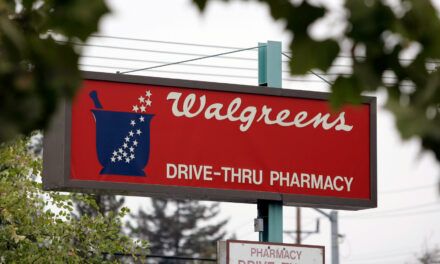The first share of $80 million that D.C. officials expect to reap from multistate opioid settlements has landed in District coffers, critical support for stemming an epidemic that claims more lives annually here than gun violence.
But no money can be spent until city leaders appoint a board to oversee it — a process set in motion more than a year ago. District officials say they have worked steadily to overcome bureaucratic roadblocks and pledge action by next month, under mounting pressure from officials and front-line harm-reduction workers who question the pace of the rollout.
“It is resources that could be transformational, not just in our immediate crisis moment but for how we set up the infrastructure for how we handle this in the future,” Councilmember Christina Henderson (I-At Large), chair of the Health Committee, said in an interview.
“We are behind, we were behind months ago,” she said, adding, “We are moving at a glacial pace in my opinion.”
D.C. has so far received about $12 million from companies that prosecutors say profited from the manufacturing, distributing and marketing of opioids that fueled a crisis of addiction. Only West Virginia has a higher rate of fatal opioid overdoses than D.C., which recorded 461 deaths in 2022, double the rate in 2018, according to data from the city medical examiner’s office. The pace of overdose deaths has held steady in 2023, with 152 in the first four months of the year — a toll that city data shows has disproportionately affected older Black men.
City leaders estimate that D.C. stands to bring in at least $80 million by 2040 as roughly $54 billion in settlements over the last decade begins filtering out. More than 3,000 state and local governments have sought compensation to mitigate harm caused by opioids or to prevent future substance abuse in a crisis exacerbated by fentanyl and other synthetic opioids.
The District expects to receive funds from opioid manufacturer Johnson & Johnson, the three major pharmaceutical distributors and the consulting firm McKinsey & Co., said Gabriel Shoglow-Rubenstein, spokesman for Attorney General Brian L. Schwalb, who will sit on the District’s commission. (Money the District might receive from Purdue Pharma is not included in the $80 million estimate because that settlement is the subject of ongoing litigation.)
“We are losing hundreds of residents each year to opioid overdoses,” Schwalb wrote in response to questions about the funds. “We need to move as quickly as possible to effectively put the opioid settlement funds to use in combating this crisis and all of us involved in the process must act with the urgency this crisis demands.”
The commission will make recommendations to Mayor Muriel E. Bowser (D) and the D.C. Council for how to address long-standing gaps in access to care and services to reduce opioid use disorder as well as substance use and mental health disorders, including developing facilities, with the goal of saving lives.
A spokesman for Bowser, who must name five members to the commission, referred questions about the timetable to the Department of Behavioral Health, the lead agency in the District’s opioid response.
Phyllis Jones, chief of staff to agency director Barbara J. Bazron, said the agency is taking applications for membership on the commission and searching for a director to run the Office of Opioid Abatement, which will administer the funds.
“We think we’ve been moving very quickly on this,” Jones said in an interview Tuesday.
Ambrose Lane Jr., founder of the Health Alliance Network, had one word for progress on the seating of the commission: “slow.”
“I’m a little concerned that it’s kind of moving [more] slowly than it should and especially as this crisis continues to grow,” Lane said. “If the trends continue the way they are, 2023 will also be a record year, and if it’s another record year then what is that saying about the current efforts?”
Department of Behavioral Health officials said they have worked steadily to lay the groundwork for the commission to begin spending dollars as soon as possible, given bureaucratic hurdles. Mendelson introduced the bill last summer, Bowser signed it in mid-January, and, because D.C. bills must pass congressional muster before becoming law, this one didn’t take effect until March. The following month, Jones said, the Health Department and the Department of Behavioral Health arranged funding to begin setting up the Office of Opioid Abatement.
Several staff members have been researching how other states set up their grant programs and developing an application process to aid the commission in spending dollars quickly. Officials are searching for an office director, who must have at least 10 years of professional experience and education in prevention, recovery, treatment and harm-reduction efforts for opioid use disorder and co-occurring substance use and mental health disorders.
D.C. Council Chairman Phil Mendelson (D), who has four appointments to the commission, said that nothing had prevented him from making his recommendations and that he planned to act soon.
“I certainly don’t want to be in the way of the commission,” he said in an interview .
Each state uses a different process to decide how to spend settlement dollars. Virginia and Maryland have divvied up funds to cities and counties and set up state-level authorities and boards to distribute additional grants. In Virginia, which expects to receive $1.1 billion over the life of the settlements, one such grant will fund the creation of a treatment center that will provide post-detox and recovery services for women.
Anthony E. “Tony” McDowell, executive director of Virginia’s Opioid Abatement Authority, said the agency sought to balance urgency and deliberation in awarding $23 million in grants last month.
“We’re trying not to let any moss grow,” he said. “You can get the money out first or you can be super careful; it’s hard to do both, but that’s exactly what we’re trying to do.”
In D.C., the 21-member commission will include high-profile government officials, service providers, public health professionals, and people who have experienced opioid use disorder firsthand and through loved ones. The commission must hold public meetings at least four times a year, according to the code.
Patricia Quinn of the D.C. Primary Care Association and Mark LeVota of the District of Columbia Behavioral Health Association, who will represent their organizations on the commission, noted the need for housing for people in various stages of treatment and recovery.
LeVota said that unlike the opioid dollars, state and federal funding sources can’t pay for brick-and-mortar infrastructure for people coping with substance abuse and mental health disorders, often simultaneously.
“It’s not often that resources come to meet such a pressing need in the city,” Quinn said. “All of us have an urgency about that, knowing what the needs are, and we are ready to go. As the commission sets a date, we are in.”
The Bowser administration’s strategy is rooted in a plan called Live.Long.DC. that launched in late 2018 with a goal to reduce opioid use and overdoses by 50 percent by 2020. Numbers have risen dramatically since then, prompting members of the D.C. Council and advocates to clamor for more action, even as they have applauded the administration’s embrace of harm reduction with the widespread distribution of the overdose antidote naloxone and fentanyl test strips, including in free vending machines.
“There seems to be a lot of gaps in terms of our plan and strategy,” Henderson said in an interview last week. “Narcan and fentanyl strips cannot be the totality of our plan, and right now I don’t feel we have articulated what else we need to be doing.”




